Harvesting Edible Flowers: How And When To Pick Edible Flowers


Many of us grow flowers for their pleasant aroma, beautiful shapes, and colors but did you know that many of them are edible? Flower harvesting for food dates back to the Stone Age with archaeological evidence showing that early humans ate flowers. It’s time to move flower picking from solely olfactory and visual to picking flowers to eat. The question is: “How to harvest edible flowers and which ones are edible?”
Harvesting Edible Flowers
Flowers have been used for centuries from China to Morocco to Ecuador for making teas, tinctures, and aromatics but they have also been used in cuisine from soups to pies and even stir-fries. That doesn’t mean that every flower you encounter is edible. Many of us already utilize the blossoms from our herb gardens but there are many other edible flowers. Before picking flowers to eat, however, be sure to identify the flower first. Some flowers look like an edible flower but are not. Don’t eat flowers if you have hay fever, asthma, or other allergies. Only eat those that are organically grown; you don’t want to ingest pesticides.
Which Flowers are Edible?
There are many edible annual and perennial flowers, so when flower harvesting for food, you have plenty of options. Some of them, such as roses or marigolds, you may have heard of before. The following is a list of annual flowers worthy of a taste.
- Calendula – peppery twang
- Garland chrysanthemum – mild
- African marigold – pungent
- Signet marigold – citrusy
- Nasturtium – peppery
- Pansy/viola – sweet
- Petunia – mild
- Salvia – musky
- Pineapple sage
- Radish – spicy-hot
- Snapdragon – bland to bitter
- Scented geranium – with apple or lemon accents
- Scarlet runner beans
- Squash (try them stuffed!)
- Sunflower
- Tuberous begonia
Perennial blooms have their place in the culinary world as well. You can eat the blossoms of any of these plants:
- Baby’s breath
- Bee balm
- Chive flower – oniony
- Dianthus – clove like
- Daylily
- Dandelion – bitter
- Red clover – sweet
- Hollyhock – slightly bitter
- Tulip – sweet
- Violet
You can also eat:
With such a variety, I bet you’re raring to begin harvesting edible flowers; read on to find out how and when to pick edible flowers.
How to Harvest Edible Flowers
Before you dive into collecting every edible flower you can find, knowing when to pick edible flowers will allow you to pick the freshest, most flavorful blooms. Harvest flowers for eating or for décor in the coolest part of the day, either early morning once the dew has evaporated or late in the afternoon when the heat of the day has passed. When you pick flowers at their peak, you avoid picking those that are not yet completely open or are beginning to wilt, which will lessen their flavor power. Picked at their peak, flowers are like herbs, their volatile oils and sugars are highest before photosynthesis and heat convert them to starch. Harvest flowers and place them gently in a shaded basket or box, taking care not to crush them. Gently brush off any dirt or bugs and store the flowers in the refrigerator until ready to use. Prior to using the flowers, wash them off and remove the reproductive parts of the blooms. What you are doing is removing the pollen, which can affect the flavor and some folks are allergic to it. Keep in mind that not all parts of some flowers are edible. Honeysuckle and viola, for example, are entirely edible but roses, calendula, tulips, chrysanthemums, yucca, and lavender have only edible petals. Pluck only the petals for use in cooking and discard the rest of the flower. Roses, as well as dianthus, English daisies, signet marigolds, and chrysanthemums, have a white area at the base of the petals where they attach to the stem. This should be removed as well since it is quite bitter. A little flower foraging on your part will add some interesting flavor nuance to your humdrum cuisine as well as some not-so-subtle splashes of color and aroma.
Gardening tips, videos, info and more delivered right to your inbox!
Sign up for the Gardening Know How newsletter today and receive a free download of our most popular eBook "How to Grow Delicious Tomatoes."

Amy Grant has been gardening for 30 years and writing for 15. A professional chef and caterer, Amy's area of expertise is culinary gardening.
-
 Clever Vertical Vegetable Garden Ideas For Small Spaces – 7 Ways To Save Space
Clever Vertical Vegetable Garden Ideas For Small Spaces – 7 Ways To Save SpaceShort on garden space? Learn some vegetable garden ideas for small spaces that are fun and easy.
By Mary Ellen Ellis
-
 26 Different Types Of Orchids – With Pictures & Information
26 Different Types Of Orchids – With Pictures & InformationDiscover stunning orchid types to grow in your home and garden – from easy beginner varieties to rare and exotic species that are the preserve of experts.
By Melanie Griffiths
-
 20 Hard-to-Find Spring Flowers & Plants That Look Amazing All Season
20 Hard-to-Find Spring Flowers & Plants That Look Amazing All SeasonIt’s finally beginning to look like spring! If you’re eager to find some unique, hard-to-find varietals to satisfy your spring fever, look here first.
By Caroline Bloomfield
-
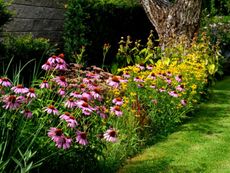 How Wildflower Strips Help Attract Pollinators To Your Yard
How Wildflower Strips Help Attract Pollinators To Your YardIf you have a small garden spot or strip available, fill it with wildflowers for our hungry pollinators. Click to learn more.
By Tonya Barnett
-
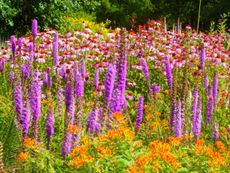 10 Knockout Native Flowers For A Punch Of Color
10 Knockout Native Flowers For A Punch Of ColorGrowing native is the way to go. See our list of ten native wildflowers that will knock you out with color.
By Amy Grant
-
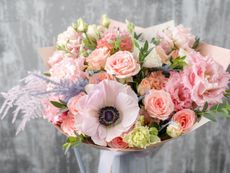 Pretty Plants For A Pastel Flower Bouquet
Pretty Plants For A Pastel Flower BouquetRoses aren’t the only romantic flower. Some romantic pastel flowers can fill in beautifully.
By Tonya Barnett
-
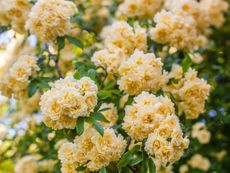 Soft Yellow Plants For A Sunny Pastel Garden
Soft Yellow Plants For A Sunny Pastel GardenClick here for ideas on some pale yellow flower varieties for pastel garden designs.
By Tonya Barnett
-
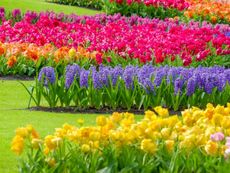 Most Common Flower Color In The World
Most Common Flower Color In The WorldWhat are the most common and least common flower colors in the world? Click here to find out.
By Mary Ellen Ellis
-
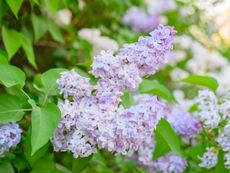 Pastel Plants For A Lovely, Light Purple Flower Garden
Pastel Plants For A Lovely, Light Purple Flower GardenClick here for ideas on some light purple plants for a pretty, pastel garden display.
By Tonya Barnett
-
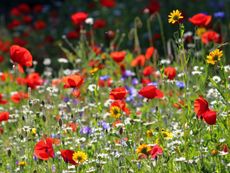 Plant Wildflower Seeds In Fall for A Stunning Spring Display
Plant Wildflower Seeds In Fall for A Stunning Spring DisplayCan you plant wildflower seeds in fall? What makes fall the best time to sow wildflower seeds? Click here for more.
By Tonya Barnett